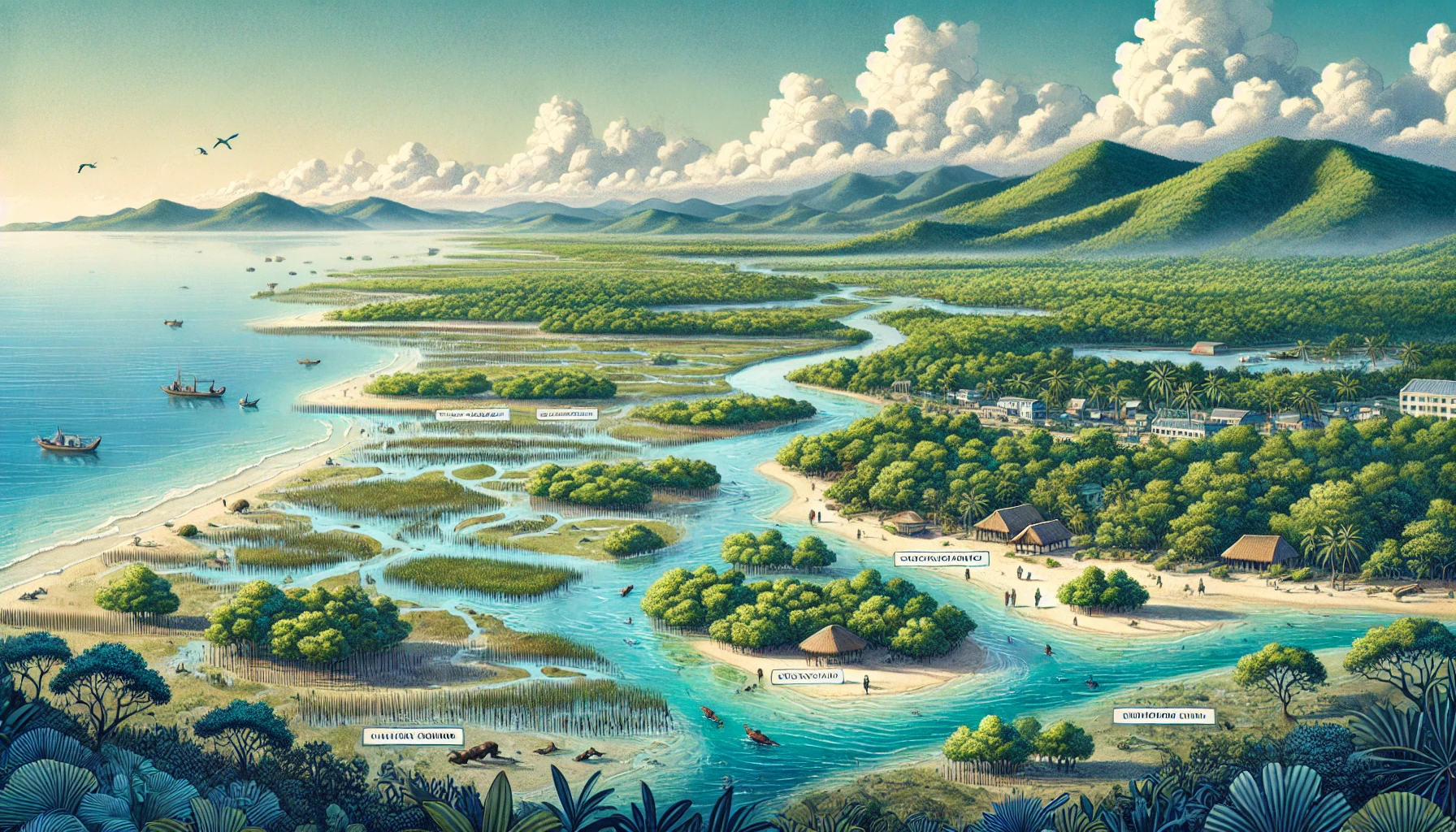Mozambique’s Blueprint for Climate Leadership: Advancing Blue Carbon Commitments
The World Bank report highlights Mozambique’s potential to leverage blue carbon ecosystems, like mangroves and seagrasses, for ambitious climate goals but emphasizes the need for clear, measurable targets and international support to maximize impact. By strengthening its NDC with transparent monitoring and diverse funding, Mozambique can lead in integrating natural climate solutions.

A report by the World Bank developed with contributions from Silvestrum Climate Associates and the support of various governmental and environmental stakeholders, highlights the potential of Mozambique’s blue carbon ecosystems to aid in achieving its climate goals. These ecosystems, including mangroves, seagrasses, and salt marshes, offer powerful natural solutions to climate change, often exceeding terrestrial forests in their carbon sequestration abilities and bolstering community resilience. Situated along an expansive coastline, Mozambique has large mangrove forests and substantial seagrass areas, making it uniquely positioned to harness these blue resources as part of its Nationally Determined Contribution (NDC) commitments to the Paris Agreement. Blue carbon ecosystems, which act as natural carbon sinks, offer notable adaptation benefits by protecting against rising sea levels, erosion, and storm surges, essential for Mozambique, one of the world’s most climate-vulnerable nations. However, the report stresses that Mozambique’s current NDC, established in 2021, lacks specific, measurable blue carbon targets, which creates challenges for transparent tracking and monitoring of climate progress. While the NDC does contain a goal to restore 5,000 hectares of mangrove forests by 2025, the report argues that this target is conservative and suggests more ambitious, structured goals to better capture Mozambique’s potential as a blue carbon leader.
Securing Resources for Climate Action
Mozambique’s role as a least-developed country means that its NDC relies heavily on conditional commitments, which would be achievable only with international financial support, technology transfers, and capacity building. According to the report, Mozambique’s climate goals will require investments that exceed half of its projected GDP for 2026, totaling an estimated 7.586 billion dollars for the period from 2020 to 2025. This substantial funding gap underscores the need for Mozambique’s NDC to indicate the level of support required, particularly for blue carbon initiatives. The report suggests that Mozambique’s new NDC, due in 2025, should separate its conservation and restoration goals for each blue carbon ecosystem, namely mangroves, seagrasses, and salt marshes, to create an actionable and transparent framework. It also proposes that Mozambique take cues from other countries, such as Belize, Costa Rica, Seychelles, and Cabo Verde, whose NDCs include ambitious, quantifiable blue carbon targets. Specific, measurable commitments can increase the confidence of potential donors and international climate finance providers by presenting concrete goals, such as sequestering a defined amount of carbon or conserving a specified area of blue carbon habitat by a particular date. Additionally, adopting international standards for greenhouse gas (GHG) inventories, like the IPCC’s 2013 Wetlands Supplement, would ensure accurate carbon accounting, which is essential for accessing carbon finance opportunities.
Building Foundations for Effective Governance
Mozambique’s NDC would benefit from a holistic approach to implementation that includes policy and institutional coordination, centralized data collection, and accountability mechanisms. Despite various ongoing blue carbon initiatives, the absence of a centralized data platform hampers Mozambique’s ability to monitor and report progress on its blue carbon targets comprehensively. This gap also reflects challenges within Mozambique’s governance structures; various ministries, such as the Ministry of Land, Environment, and Rural Development (MTA) and the Ministry of the Sea, Inland Waters, and Fisheries (MIMAIP), are involved in managing blue carbon habitats, but there is limited coordination among them. Institutional clarity and cohesive management frameworks would streamline efforts to restore and protect blue carbon resources and ensure accountability. Furthermore, the involvement of local communities, many of whom rely on these ecosystems for their livelihoods, is critical for effective conservation. The report emphasizes that community-led management initiatives, such as Community Fishery Councils, could provide a foundation for sustainable blue carbon stewardship. However, alternative income opportunities are essential for communities that may otherwise depend on unsustainable resource extraction, such as mangrove wood harvesting. Creating public-private partnerships and developing formal employment opportunities for coastal residents could reduce resource exploitation and support conservation.
Expanding Financial Avenues for Blue Carbon
In addition to domestic reforms, Mozambique’s updated NDC should outline an international finance strategy to meet its blue carbon ambitions. The report highlights the potential of carbon finance, including participation in the voluntary carbon market and Article 6 of the Paris Agreement, which allows countries to trade carbon credits internationally. By engaging in these markets, Mozambique could attract investments to scale up its blue carbon restoration and conservation projects. The country could also explore debt-for-nature swaps, blue bonds, and payments for ecosystem services as alternative financing options. Collaborating with funding agencies like the World Bank, USAID, and the Blue Planet Fund, as well as national financing facilitators like ProAzul, Mozambique’s Blue Economy development fund, would further enhance its ability to secure necessary resources. Establishing a dedicated “blue fund” to channel investments into blue carbon ecosystems and broader Blue Economy initiatives could offer a more stable financial base for long-term conservation and restoration efforts.
Leading with Ambition and Transparency
Mozambique’s 2025 NDC update presents an opportunity to elevate its climate ambitions by setting specific, actionable blue carbon targets, increasing transparency through standardized monitoring, and pursuing diverse financing strategies. By focusing on blue carbon as a keystone of its climate adaptation and mitigation strategy, Mozambique could lead in integrating natural climate solutions into national policy, providing a model for other vulnerable nations. Effective blue carbon strategies would not only contribute to global climate goals but would also enhance local resilience, secure biodiversity, and generate sustainable economic opportunities for Mozambique’s coastal communities.
- FIRST PUBLISHED IN:
- Devdiscourse
ALSO READ
Climate Change Summit: A Call for Action
Austrian Fruit Farming Faces Sharp Decline Due to Climate Change
Article 6: A Double-Edged Sword in the Battle Against Climate Change
Chilies vs. Corn: Zimbabwe's Battle with Drought and Climate Change
Global Emissions Surge: The Race Against Climate Change in 2024










